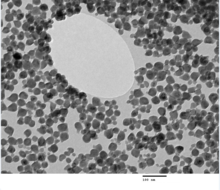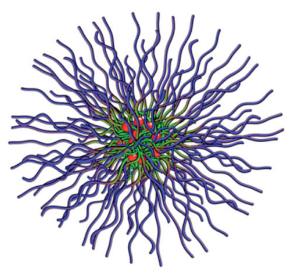
Nano Particles – The Future of Technology
With sunlight based power winding up increasingly more prevalent in the present society, researchers are hustling to discover better approaches to make the transformation of sun oriented light into usable vitality less expensive to fabricate and progressively effective.

Presently sunlight based boards are made by cutting crystalline silicon into tiny plates not exactly a centimeter thick. These little slender plates and metal prints are carefully cleaned and treated to fix any harm brought about by the cutting procedure. Subsequent to cleaning, metal conveyors and dopants (materials added to modify the electrical charge in the photovoltaic sun oriented cell) are spread over each plate. The circles are masterminded in a matrix like example on the highest point of the sun powered board. The board is then secured with a defensive sheet of slender glass that is clung to the board. It is then clung to a base material with an extravagant warm bond. The bond is expected to help channel abundance heat away from the board, in order to not overheat the cells. In spite of the fact that, these boards work, they are not as proficient as most specialists might want. They are likewise genuinely costly and still tend to over-heat.
Researchers figured out how to make pictures of excessively modest air pockets and channels (approximately multiple times littler than a human hair ) inside natural plastic sun powered cells. Things being what they are, if the plastic polymers are spread slim and prepared, the air pockets and channels will shape as a characteristic outcome of the warming procedure. The power and span o the warmth influences the design of the air pockets. The arrangement or the air pockets directs the productivity of the sun based cell.
Other educationists been developing the utilization of plastic polymers to catch and change over sun oriented light into effective vitality. Berger and his group found that adding small silver nanoparticles to the plastic polymers expanded the productivity of the sun powered boards (electrical flow created per square centimeter) expanded by practically 12%. “The little silver particles help the polymer catch a more extensive scope of wavelengths of daylight than would regularly be conceivable, which thusly builds the present yield,” Berger clarified.
In the mean time, Brian Korgel, a compound designer at the University of Texas is taking a shot at a sun based “ink”. These nanoparticle sunlight based inks can be imprinted on a plastic substrate or on hardened steel. Possibly, they could be painted legitimately onto rooftops or the sides of structures. Korgel and his group are trusting that this innovation can cut the expense of generation of sun oriented cells to 1/tenth of what it is today!
As our general public concentrates increasingly more on “environmentally friendly power vitality” arrangements, the interest for investigation into progressively proficient sun oriented innovation develops. It is the normal expectation that with the progression of these innovations, the use of sunlight based vitality will turn out to be financially practical enough to some time or another totally supplant petroleum derivatives.
